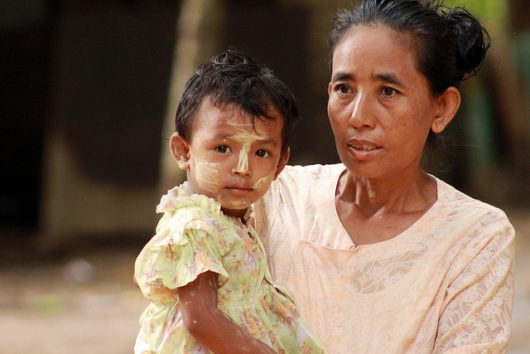7 Things to Know About the Reach Every Mother and Child Act

About 830 women die every day from preventable causes related to pregnancy and childbirth. More than 17,000 children under the age of five die from treatable conditions. The Reach Every Mother and Child Act of 2017 aims to end these preventable deaths.
7 Key Facts About The Reach Every Mother and Child Act
- The Reach Every Mother and Child Act is a bipartisan bill that has been introduced in both the Senate and the House of Representatives. If passed, the bill would create a five-year government strategy to end preventable newborn, child and maternal deaths globally by 2030. This act would focus on making existing programs more effective and emphasize the importance of “evidence-based interventions.” The United States’ government would work with governments of other countries, nongovernmental organizations (NGOs), international organizations and other entities to develop and implement this strategy.
- The act would require the U.S. president to appoint a U.S. Agency for International Development (USAID) employee to act as a Maternal and Child Survival Coordinator. The holder of this position would implement the government’s strategy to reduce maternal and infant mortality rates and oversee all programs relating to maternal and child health and nutrition.
- In 2015, countries around the world adopted the 17 Sustainable Development Goals (SDGs) as part of the United Nations’ 2030 Agenda for Sustainable Development. These various goals aim to end global poverty. As the United States helped develop these goals, it is crucial for the U.S. government to take measures to achieve them. The Reach Every Mother and Child Act is one method by which the U.S. can work to attain these goals, particularly Goal 3: “Ensure healthy lives and promote well-being for all at all ages.”
- More than 300,000 women die each year from preventable complications during and after pregnancy and childbirth. Such complications include high-blood pressure during pregnancy, bleeding during childbirth and infections after childbirth. Adequate healthcare can handle these difficulties. However, many poor women in rural, remote areas do not have access to adequate health care. By implementing plans to improve healthcare in such areas, the Reach Every Mother and Child Act can save the lives of hundreds of thousands of women around the world.
- Lack of access to quality healthcare is also detrimental to newborns and children under the age of five. More than six million children die before they reach the age of five each year, and 46 percent of these deaths occur during the neonatal period, the first month of a baby’s life. Complications during pregnancy and childbirth are the leading cause of deaths during the neonatal period.
- Extreme poverty is also a major cause of child deaths. Children who live in poverty often experience malnutrition, which makes them vulnerable to diseases including pneumonia, diarrhea and malaria. These diseases are the leading cause of death of children between the ages of one month and five years. These diseases are also preventable. The Reach Every Mother and Child Act would reduce the number of children who die from these diseases by alleviating poverty and improving access to medical services.
- Rep. Dave Reichert (D-WA-9), one of the members of Congress who introduced the bill in the House, asserts that the “Reach Act will give the world’s most in-need families the tools and resources to climb their way out of extreme poverty.” Enabling women and children to escape poverty gives these people the opportunity to contribute to and improve their communities. This in turn creates a “safer and more stable world by “strengthen[ing] security and stability.”
Support is Key
The Reach Every Mother and Child Act has strong support from more than 20 NGOs and from both Democrats and Republicans in both houses of Congress. The act would save millions of lives and is crucial to the reduction of maternal, infant and child mortality rates around the world.
– Laura Turner
Photo: Flickr
